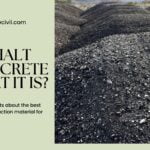Generally, plenteous useful properties of bricks exist making it the widest used and most popular construction material. Its resilient and sustainable characteristics against forces of nature are not new or not unknown.
Among brick properties, there are some basic ones which are related to the physical character and there are some additional properties that describe their mechanical properties, durability and thermal characteristics in construction. Mechanical brick properties are also referred to as the engineering properties of bricks.

Physical Properties of Bricks in construction
-
Compressive Strength of bricks
Generally, bricks have high compressive strength in the range of 5.5 N / mm2 to 140 N/mm2. If the crushing strength of the bricks is less than 3.5 N/mm2 it must not be used. A field test about strength of the bricks is to fall the brick from a height of 1 meter and it must not break in to pieces.
Use of bricks in load bearing walls is only because of its high compressive strength. The compressive strength property of brick depends on the composition of clay and the degree of burning.
It is tested by taking representative samples from lot of bricks and after filling the frog groove with mortar and its setting, it is rested on the pad of the crushing UTS machine and load is applied till crushing to determine the ultimate compressive strength of the brick. The load determined as a result required for crushing is divided by surface area of the brick to get the required value of compressive strength in units of N/mm2.

-
Water Adsorption Properties of Bricks
Although from appearance the brick looks firm and solid you can’t take brick as some flimsy material. But as it is made with a clay, it has hundreds of voids in it that joins up to form capillaries for water to get absorbed. So bricks do have water absorption properties that are sometimes in such a large quantity that the water could percolate towards the inside face of the wall, no matter how much thickness is of the wall.
In such heavy rainfall areas, it is therefore recommended, to use cavity walling system. In this system the exterior wall is constructed in such a way that between the two parallel layers of bricks, a space or cavity is introduced that not only increase the insulation properties but also avoids the surface water to get percolated towards inside.
It is very easy to carry out the water adsorption test of bricks. The sample of bricks are first weighed in dry state and is then immersed in water for 24 hours. After 24 hours, these saturated bricks are weight to get saturate / wet weight. The difference of these weights are noted as percentage to give %age absorption of bricks.

-
Hardness
Bricks are generally hard because of baking in kiln and if you scratch the brick with nails it must not produce any impression. This is very important property of brick because the longevity and durable life of brick is directly related with its hardness. Unlike other properties, there is no laboratory test to determine accurately the hardness of the brick.
Hardness of brick is tested by the compressive testing machine or UTM machine. In this test, the brick is placed inside the testing machine and a compressive load is applied on the brick until the brick breaks. The reading at which the brick is broken is noted as the crushing strength value of the brick. Usually the hardness of clay bricks is noted as 3.50N/mm2.
Only hard brick is expected to have good compressive strength, resistance against water percolation and thereby the frost action. The hard bricks are also called hard burnt bricks. One method of testing whether the brick is hard or not is to tap the brick with a hammer and listen to the sound produced. If the sound is dull ringing sound that the brick is said to be sound and hard but if it gives dull thud sound it is said to be soft useless brick.
-
Efflorescence and Salts in Bricks
As bricks are made with natural clay that has many soluble salts in it with diversified chemical characteristics. These salts are crystalized later on when the bricks are saturated and water is dried from the surface. This phenomenon is termed as efflorescence. This white powdery scum on the bricks is a stubborn and persistent trouble that has plagued the brick industry with complete detrimental effects on aesthetics of the structures.
This problem is more persistent in substructure of the building i.e. areas below DPCs where the wall bricks are more liable to get saturated with water. Although the production of this flowery white powder is apparently not detrimental to the structural integrity of the brick wall. But in some cases if the salts are present in large concentrations in clay bricks, the saturation and crystallization of salts would result in spalling of the surface layer of bricks.
The efflorescence in bricks can be evaluated by using a laboratory test. The brick, obtained from representative sample of the lot, is placed in a water dish such that it gets immersed up to depth of 25 mm. The assembly is left in a warm room so that water can be absorbed in the brick and is then evaporated upon drying. At the end the surface of the brick is visually inspected for high, moderate or low level of efflorescence.
-
Insulation Properties of Bricks
Depending on the thickness of the brick wall, an ideal brick possesses sound insulation and thermal insulation properties. A brick with thickness of 4.5 inches can insulate sound of 45 decibels frequency and if the thickness is increased up to 9 inches, sound of 50 decibels can be insulated.
Unlike wood, bricks provide normal thermal insulation which is very handy in some cases. It has the ability to absorb heat at fast rate but would release it at very slow rate and in doing so it can save up to 30 % energy making it a useful material for energy efficient buildings. So we can say that compared with wood, brick can help to regulate and maintain constant interior temperatures of a structure due to its ability to absorb and slowly release heat.
The conductivity of heat and sound through bricks is dependent on density and porosity of bricks. Very heavy and dense bricks conduct heat and sound at greater rate. But they have poor thermal and sound insulation qualities. In view of above, an ideal brick would be the one that is light but strong giving adequate insulation against heat, cold and noise.
-
Fire Resistance
According to Howstuffworks, brick is at the top of fire-resistant building materials list. When the bricks have a proper structure they can offer protection against fire with maximum rating of 6 hours. As bricks are already made by burning so it is readily expected to be fire resistant.
-
Wear
Because of hardness of bricks resulting from verification, bricks are stone enough with such molecular properties that provide excellent resistance against wear.
-
Porosity
Bricks have tremendous amount of interconnected pores in them. These pores make up capillaries for the water to get absorbed. If properly managed, this property is very useful in terms of regulating the temperature and humidity inside temperature.
Chemical Properties of bricks
The properties of brick that depend on the chemical composition of the bricks are called chemical properties of bricks. These are properties like Absorption value, porosity, frost resistance and efflorescence.
So I have tried to explain various properties of bricks, please don’t forget to share it with your friends on social networking sites.



















